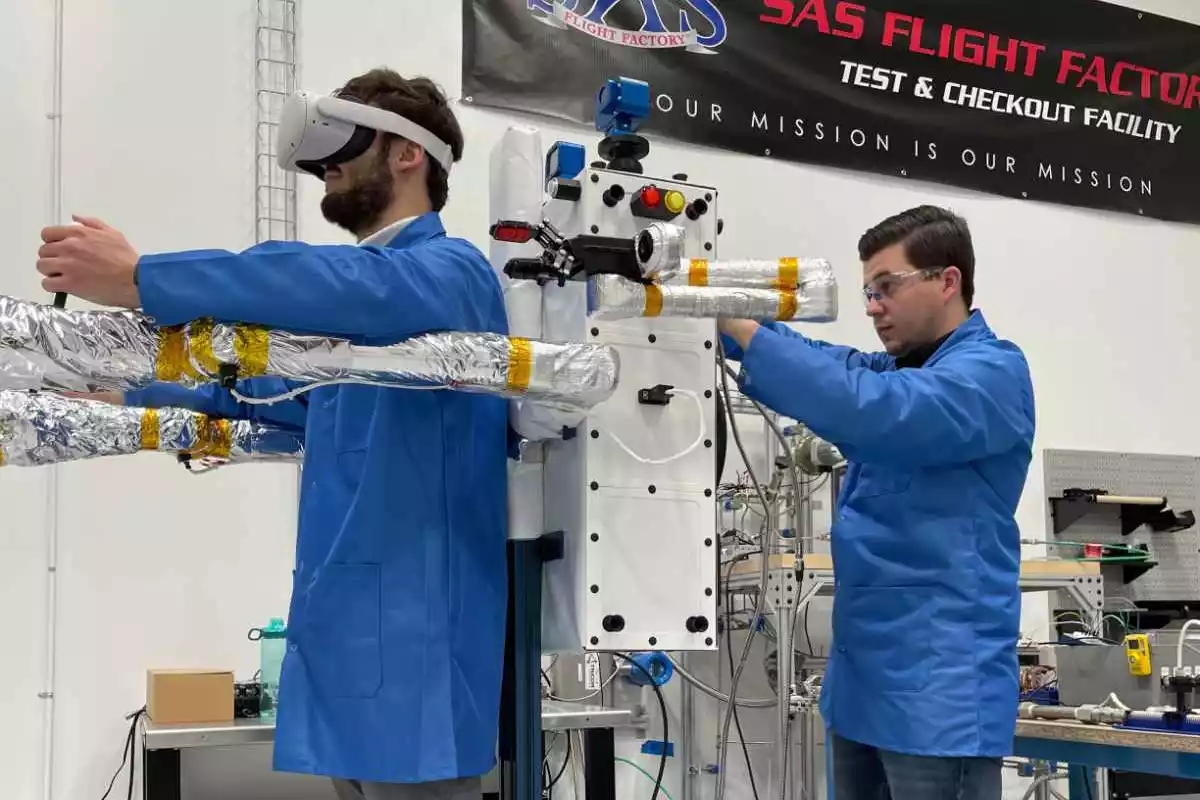In anticipation of the near future when Low-Earth orbit (LEO) will become a cosmic building site for privately owned and operated crewed space stations, NASA has awarded a Space Act Agreement (SAA) to Special Aerospace Services (SAS) to develop a commercial version of the space agency's Autonomous Maneuvering Unit (AMU) astronaut jetpack.
In the classic sci-fi feature Destination Moon from 1950, there's a scene where one of the Technicolor astronauts loses his grip during a spacewalk and floats away from the Moon-bound spaceship. It's the potential nightmare of every space mission that includes some extravehicular activity (EVA), so it's no wonder that space engineers have long been interested in ways to help space travelers move about in the weightless vacuum.
As far back as the Gemini project, NASA was testing maneuvering devices. One of the earliest was a sort of pistol that incorporated nitrogen tanks and little nozzles that would allow an astronaut to move about by pointing where they wanted to go and pulling the trigger. Over the years, more sophisticated versions in the form of thruster packs were tested inside the Skylab space station in the early 1970s and the AMU was standard equipment on the Space Shuttle.
Today, NASA and the other partners aboard the International Space Station (ISS) take a very cautious approach to spacewalks, relying heavily on safety lines, locking footrests, and robotic arms. However, there is still a very real element of danger, so the life support packs on the American spacesuits include a small thruster pack to help wayward astronauts get back to the station and even incorporate an automatic system to keep the spacewalker from going into a dangerous spin.
With NASA turning the attention of its human spaceflight program to deep space, LEO will become the domain of private companies, with the space agency purchasing access to commercial outposts as needed. To help with this, technology and facilities are being shared with companies like Special Aerospace Services to develop the needed systems.
Awarded under the second Collaborations for Commercial Space Capabilities (CCSC-2) initiative, the new commercial version of the AMU will be used for civil, commercial, and national security missions. The exact nature of the new unit has yet to be nailed down, but it will likely use cold gasses like nitrogen for banks of thrusters as well as intelligent systems to help maintain stability and for navigation. It may even use advanced features like an automatic return function to bring an unconscious astronaut back to the airlock for rescue.
"This agreement is critical in providing expertise, historical data, lessons learned, and access to NASA personnel in order for SAS to accelerate our commercial development of the AMU technology," said Special Aerospace Services Chief Technical Officer & Co-Founder Tim Bulk.
Source: SAS





